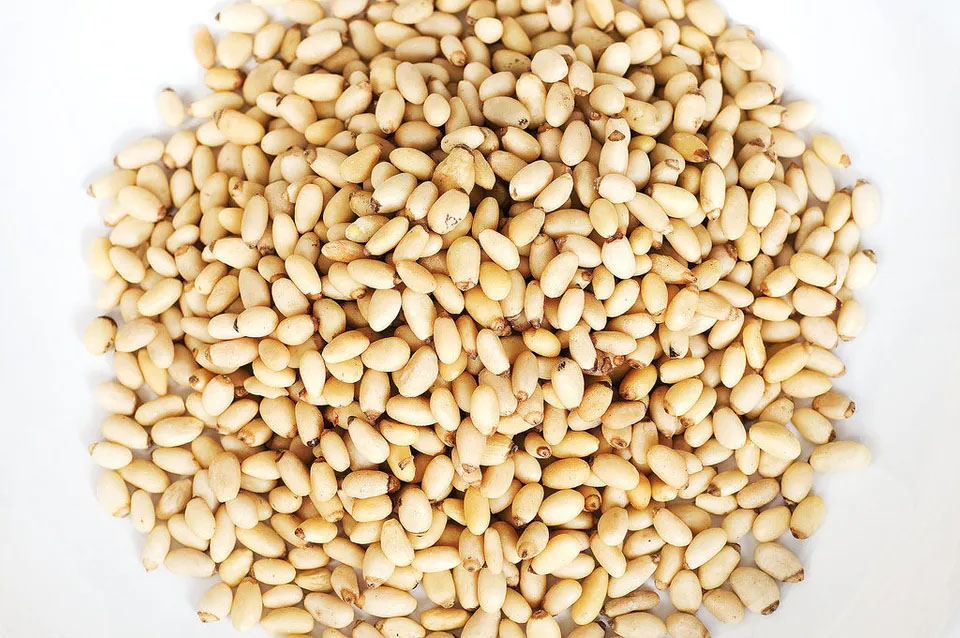As everyone who uses pignoli nuts in recipes can attest, the delectable nuts are notoriously expensive, but there is nothing new when it comes to enjoying their flavor and texture; people have been eating them since the Stone Age. For Italians, pignoli nuts are a favorite and for good reason, they are a must for numerous recipes and their sweet, subtle flavor is unmistakable. The downside is the cost, but every cook puts that aside when it’s time to make pesto for supper or pignoli cookies at the holidays. Most people do not realize that the pignoli comes from pine cones and the finest pignoli nuts come from the pine forests on west coast of Italy along the Tyrrhenian Sea, from Liguria to Calabria. Sicily and Sardinia also produce superior pignoli nuts for most of the world’s production.
Roman soldiers took pignoli nuts with them as food when they conquered Britain over 2000 years ago. Even back then it was recognized that pignoli nuts were good for you. They are rich in the same healthy fats that other nuts contain and are full of antioxidants. When it comes to our favorite nuts, we are not alone in proclaiming that nothing beats the pignoli.

It is worth mentioning that while all pine trees will produce a pine nut, there are only about 18 species that produce nuts large enough to be of value for people. These trees are only found in the northern hemisphere, but the quality of the nuts vary considerably. The pignoli of Europe are long, slender and highly-prized, with those from Italy remaining the gold standard of the world. No other nut emerging from a pine cone is as light, yet flavorful. The Italian variety of tree that produces the nut is called the stone pine. American pinyon pine nuts are not quite up to the Italian standard, but will do in a pinch. They are larger and easier to shell. Ones to avoid are those from Asia, which come from the Korean pine. These are shorter and stubbier. While these nuts are much cheaper in price, you will unfortunately find that you get what you pay for. The predominant characteristic of these nuts is a lack of flavor coupled with a bitter aftertaste. Believe it or not, the metallic taste can last for days! You are far better off sticking with pignoli from Italy.
Now is the season for harvesting pignoli and you can even try it on your own. Pignoli nuts are the seeds of the pine tree. As you look around at the number of pine trees, you then might ask, why are pignoli nuts so expensive? First of all, some take as long as three years for the seeds to mature, but the majority take 18-24 months. They bud in the beginning of spring and grow until the end of summer, but then the cones become dormant during fall and winter and only reach maturity during the following summer season. The really stubborn ones take another annual cycle to be ready for harvest.
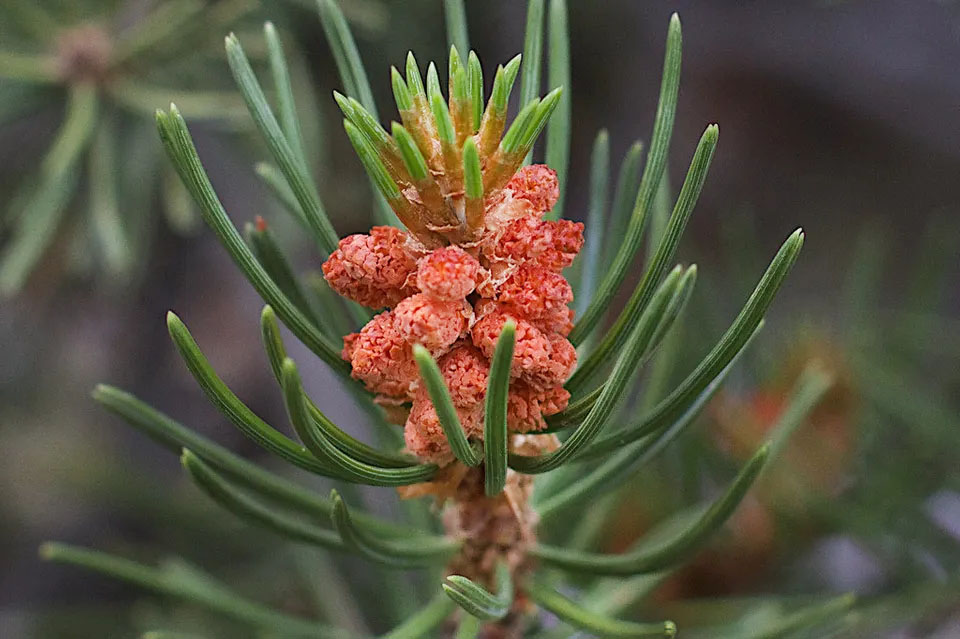
If you have a pinyon pine in your yard, the middle of autumn is the ideal time to pick the cones. Start by looking for pine trees with low branches containing both opened and unopened pine cones. The opened pine cones indicate that the pignoli nuts are ripe, but these are not the ones you are after. By this time, the cones have already released their nuts and the squirrels have beaten you to the harvest and whatever the squirrels miss, the birds will have eaten. Instead, when you are harvesting pignoli nuts from pine cones, you will want to gather closed cones. Twist them off the branches and fill a bag with the cones.
Pine cones grow with overlapping scales and the pignoli nuts are located inside each scale. The scales open when exposed to heat and dryness. Ideally, put the cones in a burlap bag and let them dry in the sun for about two weeks. This will help the cones release the nuts on their own, saving time when it comes to harvesting. Shake the bag vigorously and many of the nuts will slide out. Don’t neglect the nuts that are still in the cones; crack them open and then separate the nuts from the cone pieces.
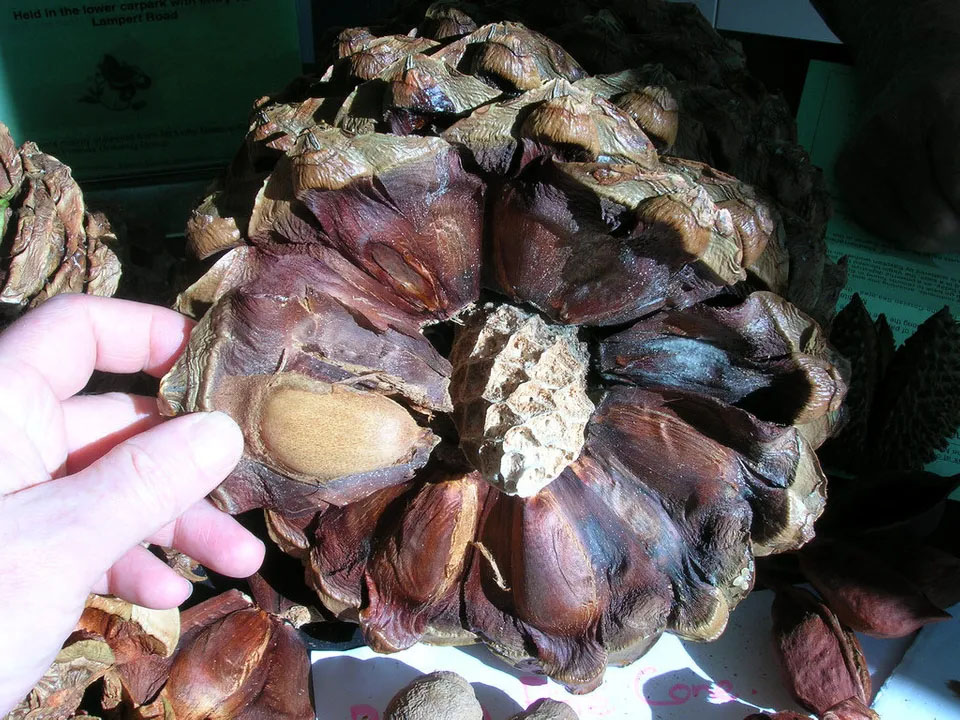
Even after extracting the nuts, you are still not done. Pignoli nuts also have a second shell, which has to be removed before eating. The shell thickness can vary significantly, from thin and easy to remove to very thick and particularly stubborn. The harvesting process is time consuming and certainly painstaking. It explains why pignoli nuts are so expensive. Given the amount of work, you are far better off buying them in the store. To avoid regrets and ruining your recipes, make sure to get the right ones – only those that are grown in Italy.
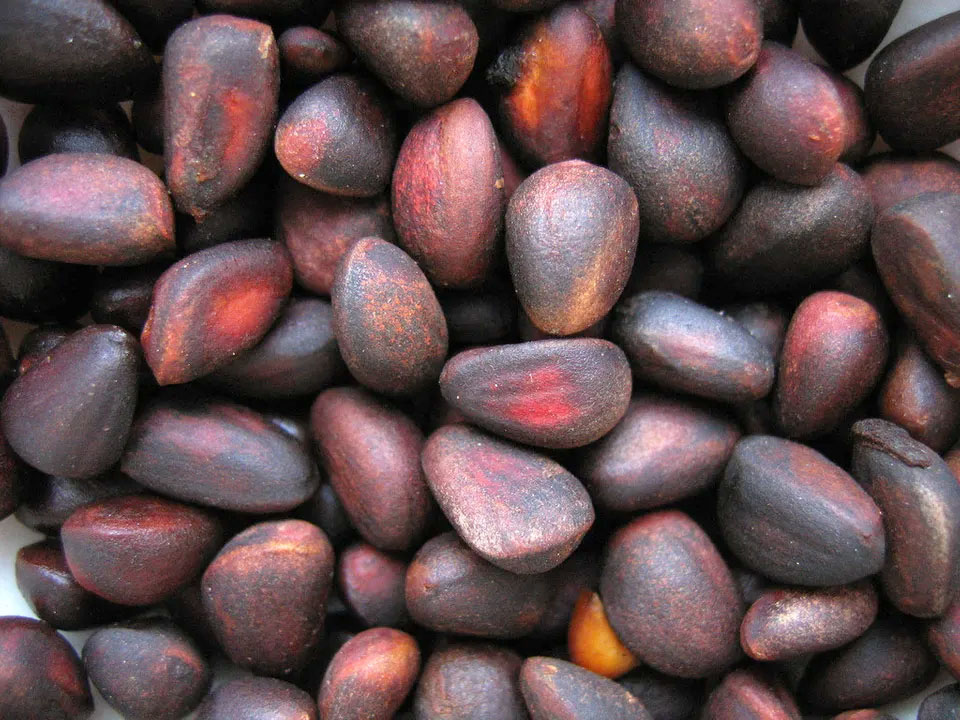
PIGNOLI RECIPES
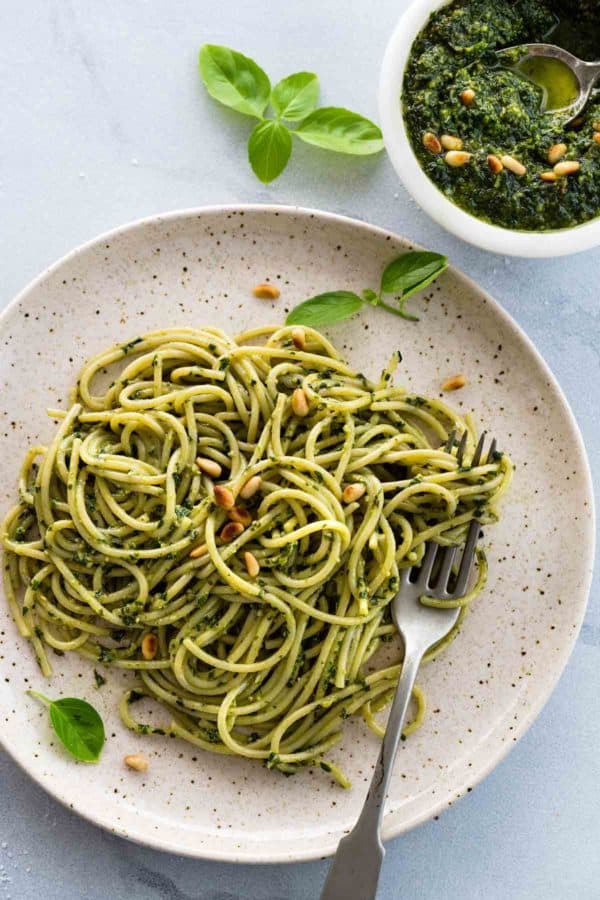
Basil Pesto
Traditionalists use a pestle and mortar to make this sauce. You can use a food processor to speed things up and no one will be the wiser.
Ingredients:
- ½ cup extra-virgin olive oil
- ¼ cup pignoli nuts
- 1 ¼ cups tightly packed young basil leaves
- 1 garlic clove, peeled
- ½ teaspoon salt
- 1 cup freshly grated Parmigiano Reggiano
Preparation:
In the bowl of a food processor, pulse the basil, garlic, pignoli and the salt together. Gradually pour in the olive oil with the motor running; the mixture will emulsify. Transfer the pesto to a serving bowl and stir in the Parmigiano with a fork. Pesto keeps in the refrigerator up to 1 week provided it is topped with a thin layer of olive oil; it can also be frozen for up to 1 month if the Parmigiano has not been added.
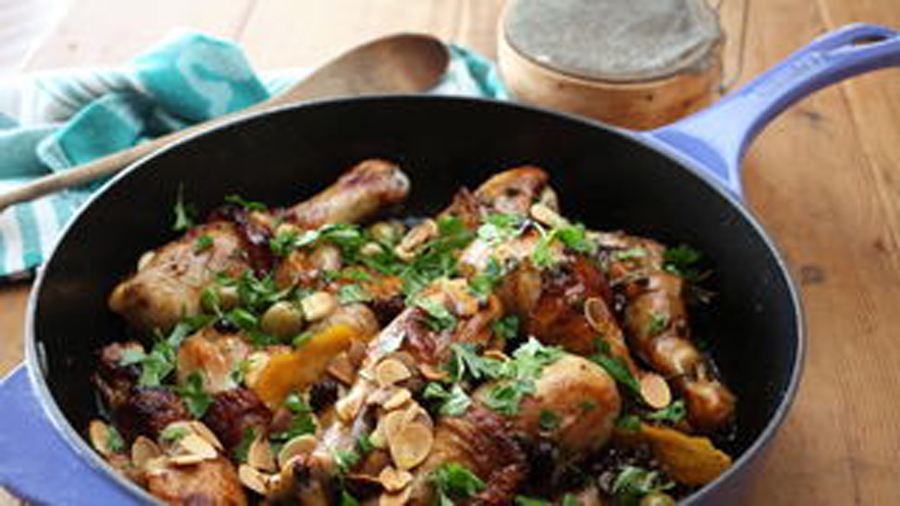
Coniglio con Pignoli e Olive Taggiasche (Rabbit with Pine Nuts and Taggiasche Olives)
Ingredients
- 1 rabbit, cut into pieces
- 1 cup pitted taggiasche olives (or another mild Italian black olive)
- 1 cup of pignoli nuts
- 1 white onion
- 1 cup of dry white wine
- rosemary and sage (2 spring each)
- olive oil
- salt
Preparation
Mince the onion with a few leaves of sage and the leaves off a sprig of rosemary and sauté the mixture until the onion begins to turn golden in a large pot. Add the rabbit* and brown it, then salt it and add the white wine. Reduce the flame; partially cover the pot and simmer the rabbit until it is fork-tender, adding the pine nuts and olives mid-way into the cooking. *Be sure to wash the rabbit thoroughly and pat dry before putting it in the pot.
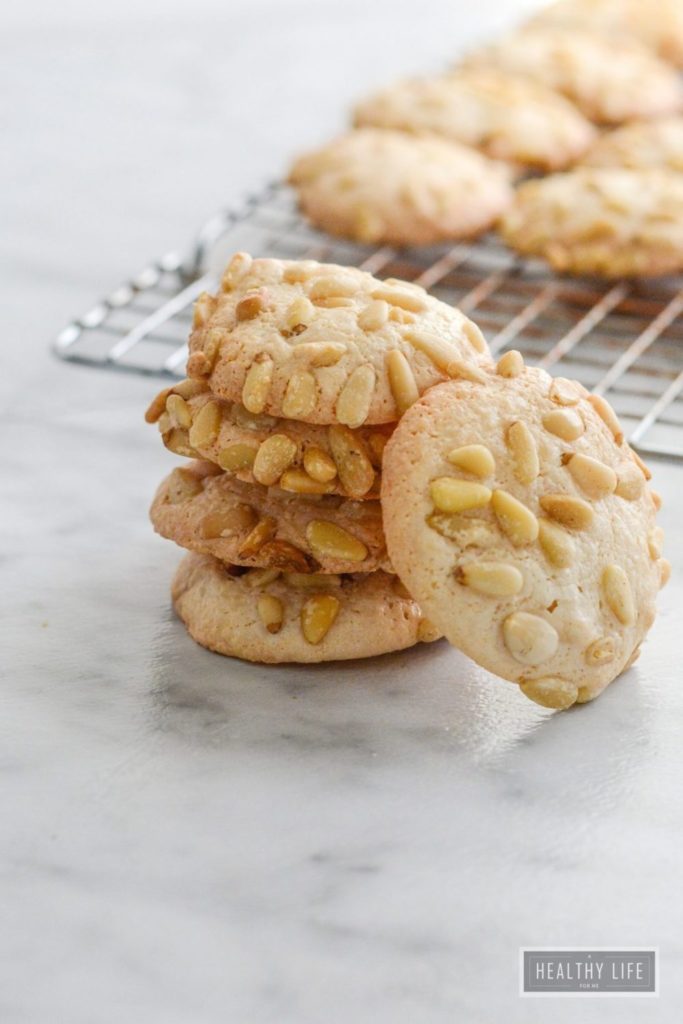
PIGNOLI COOKIES
Ingredients:
- 14 – 16 oz almond paste
- 1 cup granulated sugar
- 2 large egg whites
- 2 tsp orange zest
- 1 1/4 cup pignoli nuts
- Confectioner’s sugar for dusting (optional)
Preparation:
Preheat oven to 350F. Line a baking sheet with parchment paper.
Break up the almond paste a bit into the bowl of a food processor. Pulse until the paste has been transformed into small crumbs. Add the sugar and pulse a few more times. The almond paste will be the texture of cornmeal. Add the egg whites and orange zest. Process to make a smooth dough, about 30 seconds.
Pour the pine nuts into a wide bowl. Divide the dough into 24 portions, each will be about 2 tablespoons. Roll each cookie into a ball and then drop it into the pignolis so that one side of the cookie is covered and one side has none. Flip the cookie out of the pignolis and onto the baking sheet with the nut side up.
Bake for 13-15 minutes or until lightly browned. Cool on the baking sheets for 5 minutes and then transfer the cookies to a cooling rack. Once the cookies are cool, dust them with confectioner’s sugar (optional).
Cookies will keep for up to one week.
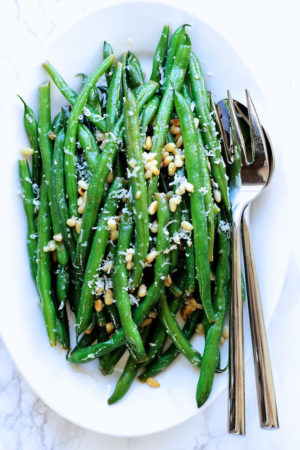
String Beans with Pignoli Nuts and Lemons
Ingredients:
- 1/3 cup of pignoli nuts
- 2 lbs string beans (fresh)
- 6 cloves of garlic (sliced length wise and thin)
- ½ cup extra virgin olive oil
- 2 tablespoons lemon juice
- 1 ½ tablespoons – zest of one lemon
- ½ cup grated Parmigiano
- salt and pepper to taste
Preparation:
In a frying pan, toast the pignoli and set aside.
In a large bowl put the raw string beans, garlic, oil, most of the lemon zest, salt and pepper and toss. Put in a baking tray and roast for 15 minutes. Stir often to make sure the string beans are cooking all around. Then cook for 10 more minutes until very lightly browned. Add the lemon juice, the Parmigiano and the rest of the lemon zest and all of the pignoli nuts. Mix well.
Transfer to a serving bowl. (If necessary, add some more salt, pepper and lemon juice to taste).


